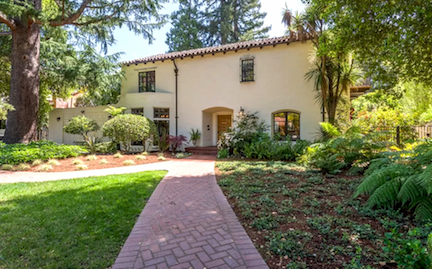
BY BRADEN CARTWRIGHT
Daily Post Staff Writer
Palo Alto City Council voted tonight (April 22) to add 16 properties to a local historic list, just a fraction of what the city set out to do two years ago.
The vast majority of potentially historic property owners have objected to being on the city’s list.
They worry that their property values will fall, renovations will become more difficult and that the rules will change in the future.
Many of them don’t even want to be flagged as potentially eligible, so council voted tonight to have planners look into removing that label from the city’s online maps.
The project started with 167 properties in early 2022. Council was responding to a new state housing law, Senate Bill 9.
SB9 changed the rules for neighborhoods where only one home had been allowed on each property before.
Property owners can now split their lots and build a duplex on each one under SB9, and the city can’t say no — unless the property is listed as historic.
Consultants for the city identified 167 properties as potentially historic during a survey in 1997.
But the properties were never listed as historic because of a similar backlash from residents.
Council members said in March 2022 that they wanted to protect these homes from demolition under SB9.
“That would be a real tragic loss for not only current generations but future generations as well,” Councilman Greer Stone said at the time.
Potentially historic homes represented just .09% of the 14,200 properties that can do an SB9 development in Palo Alto, Stone said.
“The portion of properties we’re talking about here is de minimis,” he said.
Then-Councilwoman Alison Cormack was worried that the city hadn’t provided the addresses of the homes that were potentially eligible.
“It’s possible that people who live in these homes are unaware of what we’re contemplating, and that’s just not a comfortable place to be,” Cormack said.
A consultant found that 146 properties from the 1997 list could still be listed as historic.
Of these, 83 homeowners objected to being on the list, 16 property owners welcomed it, and 47 homeowners didn’t respond to letters.
The 16 properties added tonight include 13 properties where the owner asked to be listed and three city-owned properties. Property owners who didn’t respond or objected were removed from consideration.
“With this action before the council tonight, the project is essentially over,” Planning Director Jonathan Lait said.
Lait said that he doesn’t know how much the city has spent on this project, but he will get back to council with that information.
Property owners pushed back almost right away during outreach meetings, and their resistance only grew larger and more organized as the project progressed throughout 2023.
“It has been a stressful and agonizing one year,” Kellogg Avenue resident Jessica Tsoong said in a letter to council on Monday.
Residents pleaded with the city’s Historic Resources Board on Nov. 9 and Dec. 14 to remove their properties from consideration.
“This ought to be a homeowner decision,” Churchill Avenue resident Don Marshall said after coming home to a letter on his door.
“We want homeowner choice. We want opt-in,” Waverley Street resident Darlene Yaplee said.
Realtors wrote letters saying the historic listing would drop home prices by as much as 20%.
“Owning property is about the rights that come with it. The more these rights are limited, the lower the property’s value becomes,” said a group of 31 realtors led by Michael Dreyfus.
Other residents thought the reasoning behind their historic listing was questionable.
For example, Caroline Godfrey objected to her house being listed at 211 Middlefield Road, where she has lived with her husband since 1988.
Former mayor and civil engineer Earl C. Thomas lived in the house from 1926 to 1939, according to a historic evaluation.
“We believe this justification is ridiculously inadequate to putting our house on the historic register,” Godfrey said in January. “Surely 99% of Palo Altans have no idea who Earl Thomas is. They wouldn’t know or care where he lived.”
Residents also had many questions about the rules and the incentives for having a historic property.
The current rules require remodels to go through a review with the Historic Resources Board, but the board’s recommendations are voluntary, not mandatory.
Council tried to make the rules stricter in the late 1990s, but many residents felt the city went too far.
The city would have blocked the demolition of about 700 homes and required property owners in older homes to pay for a historic evaluation before a remodel.
Residents put a referendum on the rules on the March 2000 ballot, and voters overturned the ordinance to keep the rules the same.

Autocrats like Greer Stone never pass up any opportunity to control other peoples’ property.